NASA captures "snapshot in time" showing how a star is born
Hidden in the Cosmic Cliffs behind clouds of dust lies a mysterious happening that has intrigued astronomers for years – a "hotbed for star formation." And now, thanks to NASA's James Webb Telescope, you too can see how a star is born.
The Cliffs, which NASA describes as an area of space located "at the edge of a gigantic, gaseous cavity" within the NGC 3324 star cluster, has been studied for years. But it wasn't until the Webb Telescope was able to observe it that astronomers found some of the more immaculate details.
With it, NASA scientists found 24 previously unknown outflows from baby stars, revealing a "gallery of objects ranging from small fountains to burbling behemoths that extend light-years from the forming stars."
And it's a gallery that is difficult to come by.
NASA said that the "very early" formation of every star is a "relatively fleeting event – just a few thousand to 10,000 years amid a multi-million-year process of star formation."
But Webb was able to capture a "snapshot in time," astronomer and leader of the study Megan Reiter said, "to see just how much star formation is going on in what may be a more typical corner of the universe that we haven't been able to see before."
A study on the findings was published in the Monthly Notices of the Royal Astronomical Society this month.
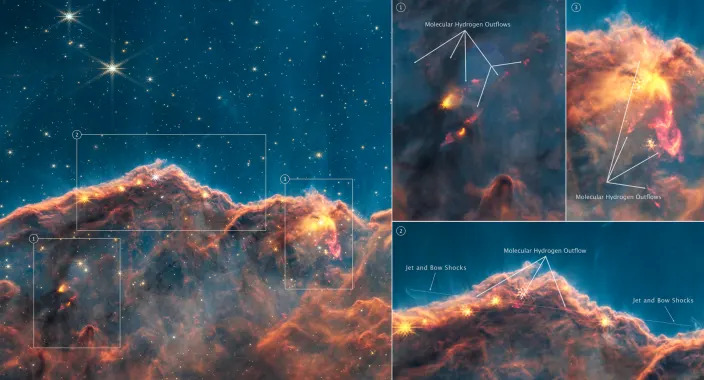
Jets and outflows are essentially star excretions of space gas and dust left over during star formation. They can be seen by the presence of molecular hydrogen, an essential ingredient in the formation process. Previously, Hubble was only able to see these ejections of more evolved objects that were in the telescope's visual wavelengths, but Webb has an "unparalleled sensitivity," allowing scientists to witness younger star stages and get "an unprecedented view into environments that resemble the birthplace of our solar system."
"Jets like these are signposts for the most exciting part of the star formation process," study co-author Nathan Smith said. "We only see them during a brief window of time when the protostar is actively accreting."
For team member Jon Morse, "it's like finding buried treasure."
"In the image first released in July, you see hints of this activity, but these jets are only visible when you embark on that deep dive – dissecting data from each of the different filters and analyzing each area alone," he said.
Many of the stars observed in this study are expected to become low mass stars like our galaxy's sun. And according to Reiter, astronomers will now have a better idea of where in space they can observe just how "sun-like stars" come to fruition.
"It opens the door for what's going to be possible in terms of looking at these populations of newborn stars in fairly typical environments of the universe that have been invisible up until the James Webb Space Telescope," Reiter said.
NASA gets "unusually close" look at a black hole devouring a star
What happens when a star gets too close to a black hole? "Unusually close" observations from NASA reveal just how complex and catastrophic it can be.
The agency's Jet Propulsion Laboratory said on Tuesday that multiple telescopes recently watched a massive black hole about 10 times the mass of our sun located about 250 million light-years away from Earth "tearing apart an unlucky star that wandered too close." It was the fifth-closest observation of such an occurrence, known as a tidal disruption event, and was first spotted on March 1, 2021.
So, what exactly happened when the star and the black hole crossed paths?
First of all, it's not something that happens in a single moment. According to NASA, it's a long process that can take weeks or months as the black hole's gravity slowly sucks in the star's being. In the most recent observation, it took place over the course of about five-and-a-half months.
"The side of the star nearest the black hole was pulled harder than the far side of the star, stretching the entire thing apart and leaving nothing but a long noodle of hot gas," NASA said.
The observations of the event, called AT2021ehb, were published in the Astrophysical Journal in September.
"Tidal disruption events are a sort of cosmic laboratory," study co-author Suvi Gezari said. "They're our window into the real-time feeding of a massive black hole lurking in the center of a galaxy."
The study said that the event also provided an "unprecedented view" of one element of the process – the formation of a corona. This happened as the star was being demolished and spawned a "dramatic rise" in high-energy X-ray light, NASA said. As that happened, the corona formed above the black hole.
But the creation of the corona – a cloud of hot plasma – in this particular event surprised astronomers. Coronae usually come with jets of gas flowing in opposite directions from the black hole, but in this case, there were no jets at all.
Yuhan Yao, a Caltech graduate student and lead author of the study, said this isn't just a rare occurrence – it's a totally new observation.
"We've never seen a tidal disruption event with X-ray emission like this without a jet present, and that's really spectacular because it means we can potentially disentangle what causes jets and what causes coronae," they said. "Our observations of AT2021ehb are in agreement with the idea that magnetic fields have something to do with how the corona forms, and we want to know what's causing that magnetic field to get so strong."
James Webb telescope: Amazing images show the Universe as never before
Jonathan Amos - BBC Science Correspondent
Sat, December 24, 2022
The Tarantula Nebula: Only 161,000 light years from Earth, this is a place where thousands of stars were born
It was the $10bn gift to the world. A machine that would show us our place in the Universe.
The James Webb Space Telescope was launched exactly a year ago, on Christmas Day. It had taken three decades to plan, design and build.
Many wondered whether this successor to the famed Hubble Space Telescope could actually live up to expectations.
We had to wait a few months while its epic 6.5m primary mirror was unpacked and focused, and its other systems tested and calibrated.
But, yes, it was everything they said it would be. The American, European and Canadian space agencies held a party in July to release the first colour images. What you see on this page are some of the pictures subsequently published that you may have missed.
A $10bn machine in search of the end of darkness
The first thing you have to remember about James Webb is that it is an infrared telescope. It sees the sky at wavelengths of light that are beyond what our eyes are able to discern.
Astronomers use its different cameras to explore regions of the cosmos, such as these great towers of gas and dust. The Pillars were a favourite target of Hubble. It would take you several years travelling at the speed of light to traverse this entire scene.
Carina Nebula
Carina Nebula
They call this scene the Cosmic Cliffs. It's the edge of a gigantic, gaseous cavity within another dusty, star-forming nebula, known as Carina.
The cavity has been sculpted by the intense ultraviolet radiation and winds from hot, young stars just out of shot.
From one side of this image to the other is a distance of roughly 15 light years. One light year is equal to about 9.46 trillion km (5.88 trillion miles).
Cartwheel Galaxy
Cartwheel Galaxy
This large galaxy to the right was discovered by the great Swiss astronomer Fritz Zwicky in the 1940s. Its intricate cartwheel structure is the result of a head-on collision with another galaxy. The diameter is about 145,000 light years.
Planet Neptune
Neptune
James Webb doesn't look into only the deep Universe. It probes objects in our own solar system, too. This jewel is the eighth planet from the Sun: Neptune, seen with its rings. The small white dots that surround it are moons, and so is the big "pointed star" above. That's Triton, Neptune's largest satellite. The spikes are an artefact of the way James Webb's mirror system is constructed.
Read more: Ringed Neptune captured by James Webb telescope
Orion Nebula
Inner Orion Nebula
Orion is one of the most familiar regions of the sky. It's a star-forming region, or nebula, about 1,350 light years from Earth. Here, Webb pictures a feature called the Orion Bar, which is a wall of dense gas and dust.
Dimorphos
Dimorphos
In one of the big space stories of the year, Nasa ran a spacecraft into an asteroid, called Dimorphos, to see whether it was possible to deflect the path of the 160m-wide rock. It was a test of a strategy to defend the Earth from threatening asteroids. James Webb caught the shower of 1,000 tonnes of debris kicked up on impact.
Read more: Asteroid deflection experiment boosted by debris
WR-140
WR-140
This was one of the most intriguing Webb images of the year. The "WR" refers to Wolf-Rayet. It's a type of star, a big one that's reaching the end of its life. Wolf-Rayets billow huge gaseous winds into space. An unseen companion star in this image is compressing those winds to form dust. The dusty shells you see extend outwards over 10 trillion km. That's 70,000 times the distance between Earth and our Sun.
Read more: Dusty star mystery solved by James Webb telescope
Phantom Galaxy
Phantom Galaxy
M74, nicknamed the Phantom Galaxy, is known for its ostentatious spiral arms. It's about 32 million light years away from Earth in the constellation Pisces, and lies almost face-on to us, giving Webb the perfect view of those arms and their structure. The telescope's detectors are particularly good at picking out all the fine filaments of gas and dust.
Artwork of James Webb in space: The telescope should give 20 years' good service
You can still hear Jonathan's Discovery programme for the BBC World Service in which he discusses the Webb project with its leading scientists and engineers.
NASA Reveals New Pictures From the James Webb Space Telescope
The James Webb Space Telescope continues to deliver awe-inspiring images and insights into the universe. Its mirror is six times the size of the Hubble Space Telescope, which has been taking stellar pictures since 1990. But it’s not just about size. The new telescope records infrared wavelengths rather than visible light so it can see farther and more clearly. Older stars appear as bright eight-pointed spikes in the Webb telescope pictures below due to the way the images are taken. But it also adds to the ethereal nature of each image as we peer farther and farther into infinity.
A Holiday Galaxy
The James Webb Space Telescope shared this festive image just in time for the holiday season. Galaxy NGC 7469‘s spiral looks like a wreath, complete with glowing lights. The large red starburst is actually made up of spikes from the telescope’s hexagonal mirrors caused by the light from the galaxy’s center. The gas and dust shines brightly as it falls into a black hole, but doesn’t it look lovely? Scientists are excited about the star-forming regions they can now see thanks to the telescope’s infrared cameras. But it’s also the perfect image for this year’s holiday card.
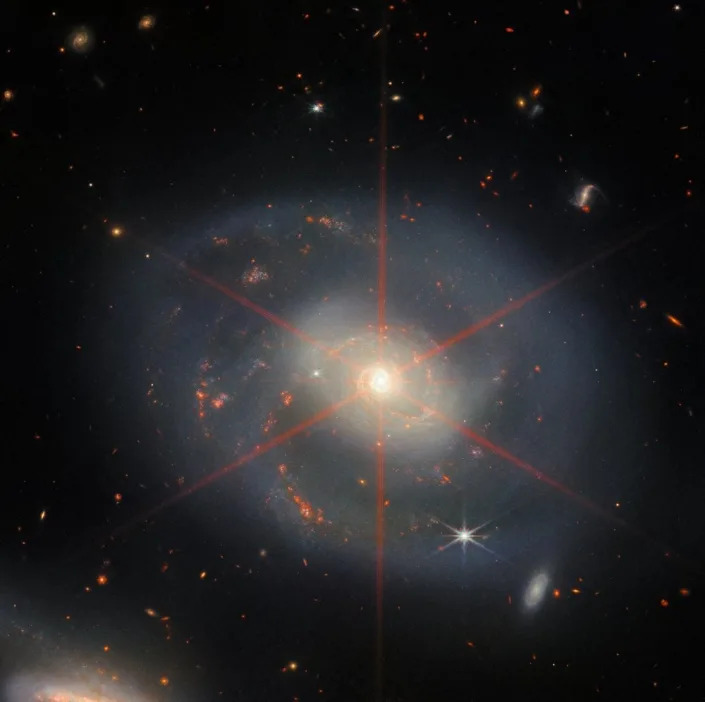
An Illuminating Protostar
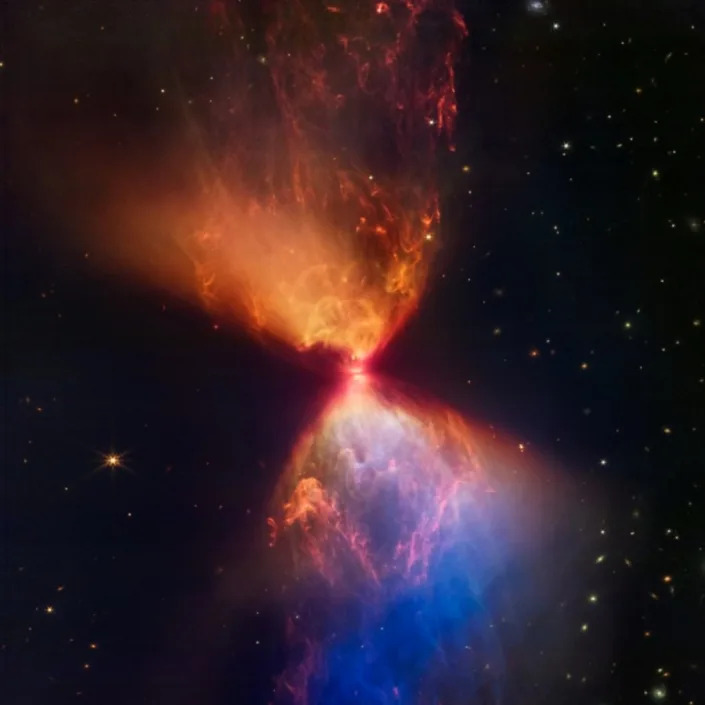
A new star, “only” about 100,000 years old, is forming in the neck of this cosmic hourglass. The protostar L1527 itself is hidden in this view, but the light it creates illuminates clouds of gas and dust that are being sucked inwards. The vivid pinks, oranges, and blues are only visible in the infrared light of the James Webb Space Telescope. As the star ages, it gathers these nearby materials into its accretion disk, gaining mass and eventually reaching the size and stability of a full star.
The James Webb Space Telescope Captures the Pillars of Creation
The first image of the Pillars of Creation from the Hubble Space Telescope in 1995 is one of the most widely seen space photos. Now the James Webb Space Telescope adds its remarkable abilities to share even more of the wonder that is the Pillars of Creation with the world.
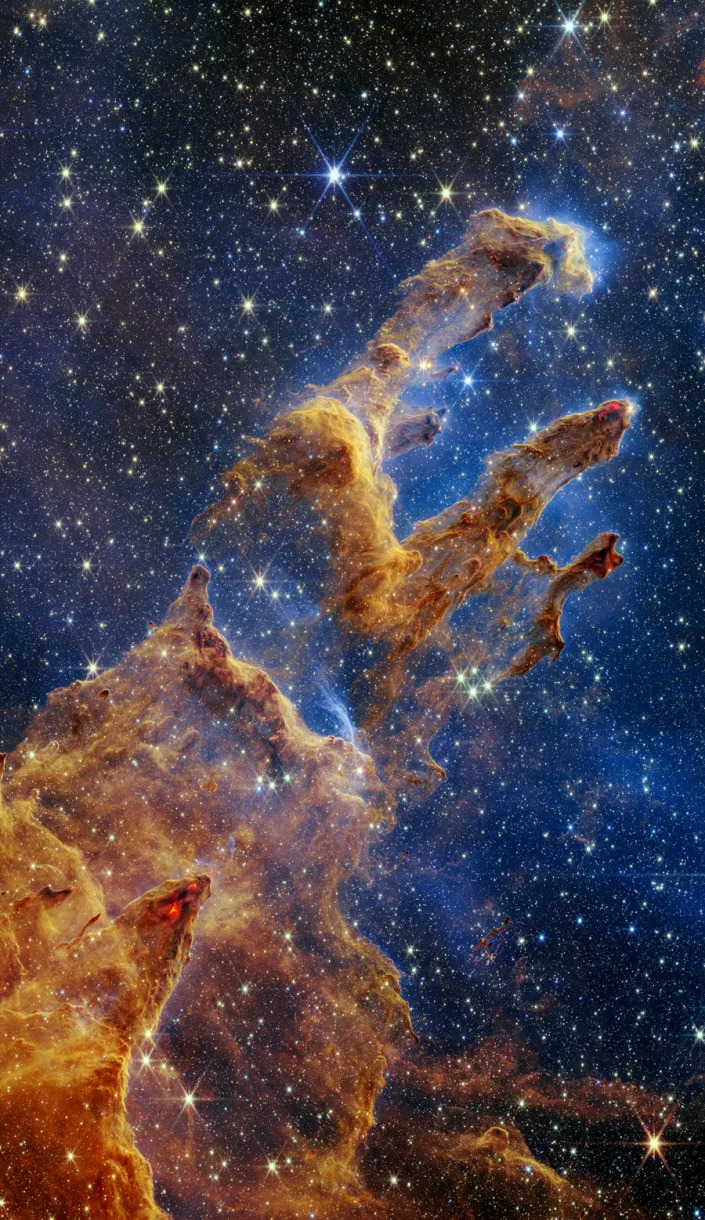
The near-infrared view of this cosmic nursery 6,500 light years away reveals many new details. The red dots seen on the edges of the top pillar are young stars, only a few hundred thousand years old. The red lava-like areas in the other pillars are ejections of hydrogen molecules from still-forming stars. The entire image is eight light years across but represents only a small area of the Eagle Nebula. This image from the James Webb Space Telescope is truly astounding.
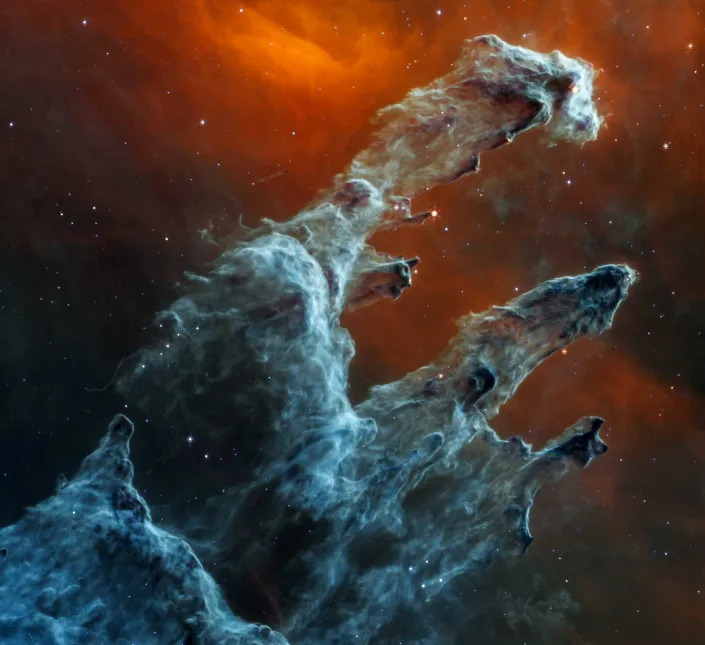
In addition, we also got to see a slightly more creepy version of the Pillars of Creation courtesy of the James Webb Space Telescope. This rendition was taken with the telescope’s Mid-Infrared Instrument (MIRI). The first image, meanwhile, was taken with the telescope’s Near-Infrared Camera (NIRCam). This second view allows researchers to see concentrations of gas and dust. But it also makes for another amazing, slightly horror-movie-inspired image from the James Webb Telescope.
Dust Rings Around Binary Stars
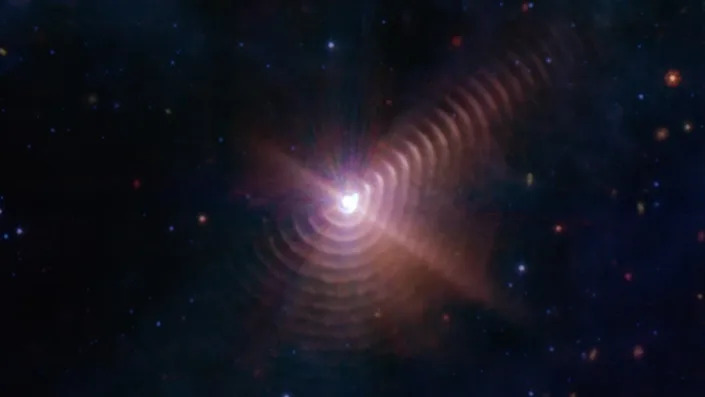
The James Webb Space Telescope imaged a system with two enormous stars, each 25-30 times more massive than our Sun. Called Wolf-Rayet 140, their orbits bring them close together about every eight years. The gravitational forces push out a huge dust cloud when that happens. Previous images from ground-based telescopes could see two dust rings, but the new image from JWST shows at least 17. Check out this video from JPL for a visualization of the two stars orbiting each other and a comparison to the older images.
Neptune’s Rings in Focus Courtesy of the JWST
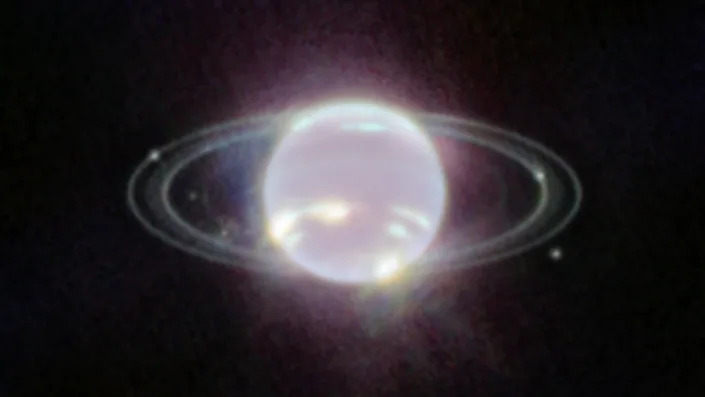
The James Webb Space Telescope has captured the clearest view of Neptune’s ring in more than 30 years. We see the rings and the planet’s fainter dust bands. Neptune system expert and interdisciplinary scientist Heidi Webb said, “It has been three decades since we last saw these faint, dusty rings, and this is the first time we’ve seen them in the infrared.”
Tarantula Nebula
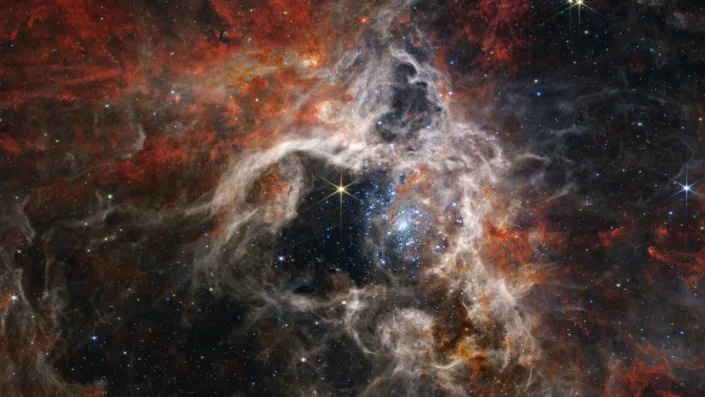
The image above of the Tarantula Nebula is 340 light years across. It introduces us to tens of thousands of stars never seen before because they were lost in the dust of Hubble’s view. The region forms news stars, which appear pale blue. And in case you’re trying to find the eight-legged creature the nebula is named for, apparently it looks like a tarantula’s burrow with silk around the entry, rather than the spider itself. The video below also shows the mid-infrared image from the Webb Telescope. Gases and cosmic dust glow turquoise and purple. It’s beautiful to us casual observers, but adds even more data for astronomers.
The James Webb Space Telescope Reveals the Phantom Galaxy
Also known as M74, the Phantom Galaxy is 32 million light years away in the constellation Pisces. When compared to pictures from the Hubble Space Telescope, the image from the James Webb Space Telescope cuts through the gas and dust to show off the star clusters at the galaxy’s core. Stars and other distant objects are also visible through patches in the arms of the spiral. Combining the images from the two space telescopes gives astronomers the best of both worlds. The visible and infrared light spectrums provide complementary insights into the mesmerizing center of the Phantom Galaxy.
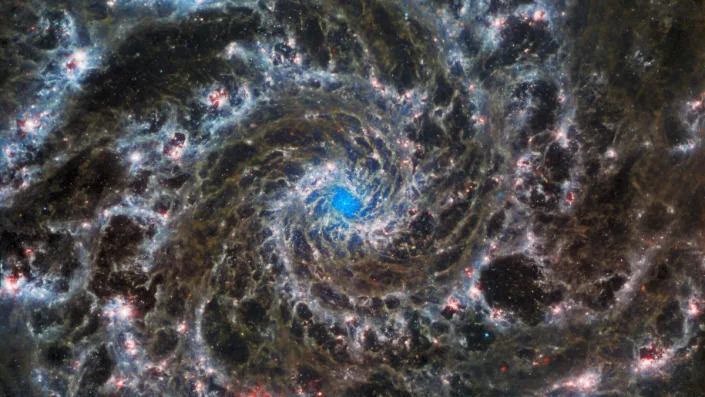
Exoplanet HIP 65426 b
Images of this faraway planet are the first of one outside of our Solar System. Different cameras and filters on the James Webb Space Telescope provide multiple views and insights to astronomers. HIP 65426 b is a gas giant nine times the mass of Jupiter, but we don’t know much more about it yet. Scientists are analyzing all the new data from the Webb Telescope. They removed the light from the planet’s sun using a coronagraph. Once the much brighter star was masked, the faint planet could finally be photographed.
First Images from the JWST
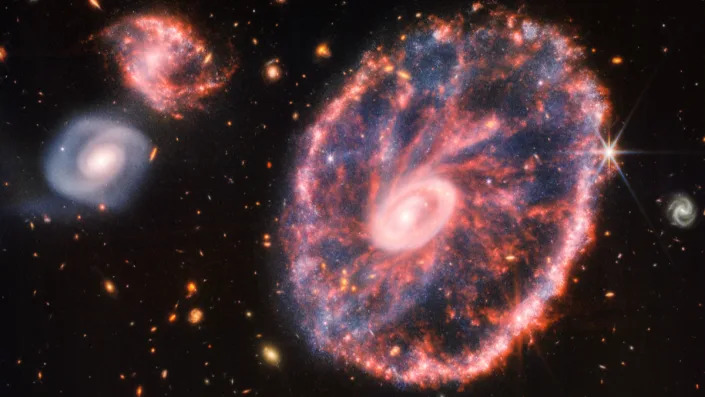
Keep up with the telescope’s Twitter account to see the newest images and research. These include tests taken right here in our own Solar System. Like stunning views of Jupiter, including aurora and some of its many moons. And plenty of distant targets, like the Cartwheel Galaxy and its swirling dust clouds. And of course the first images, including a deep field view that included the oldest and farthest away objects ever photographed.
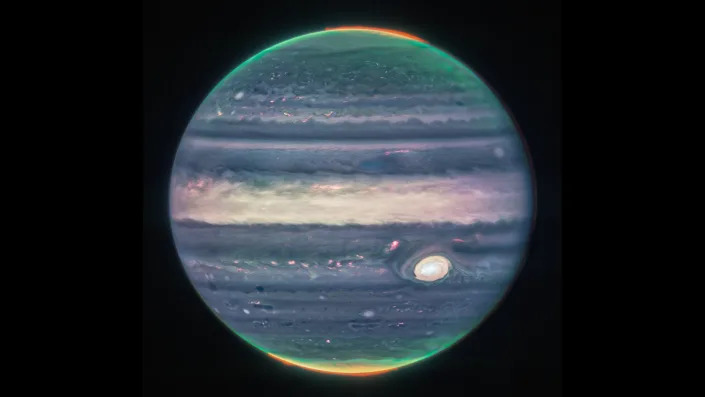
Melissa is Nerdist’s science & technology staff writer. She also moderates “science of” panels at conventions and co-hosts Star Warsologies, a podcast about science and Star Wars. Follow her on Twitter @melissatruth.
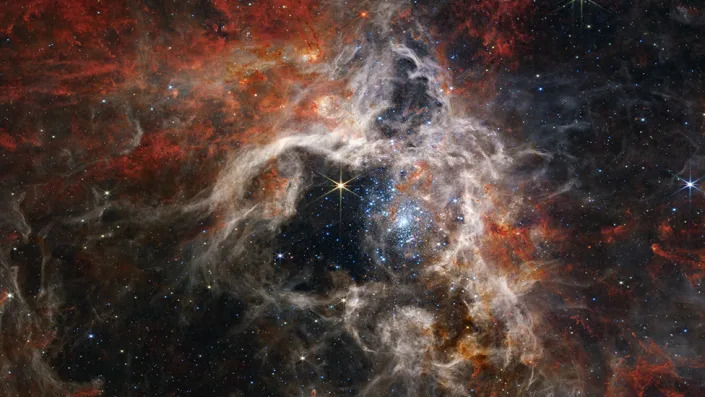
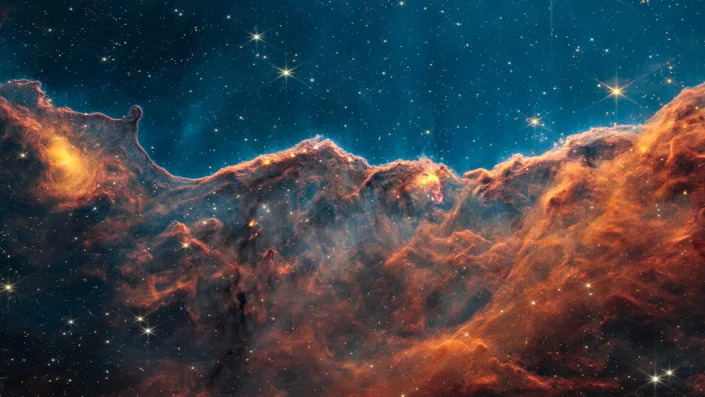
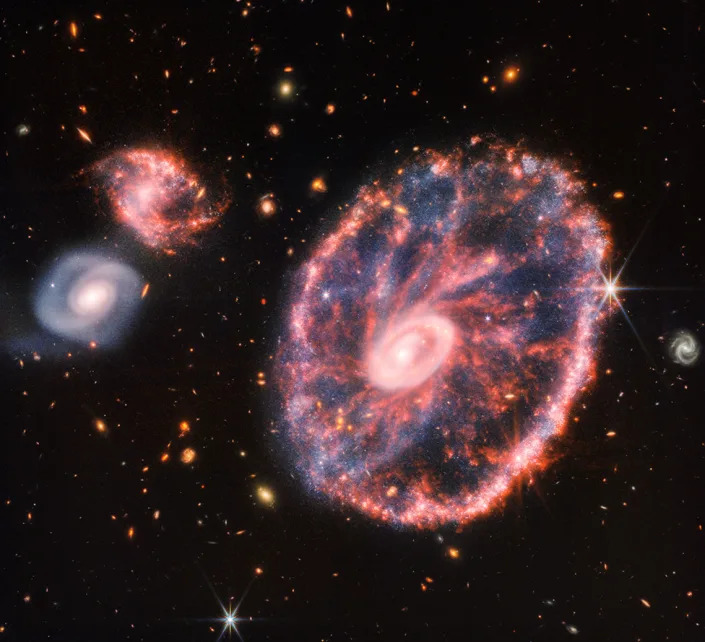
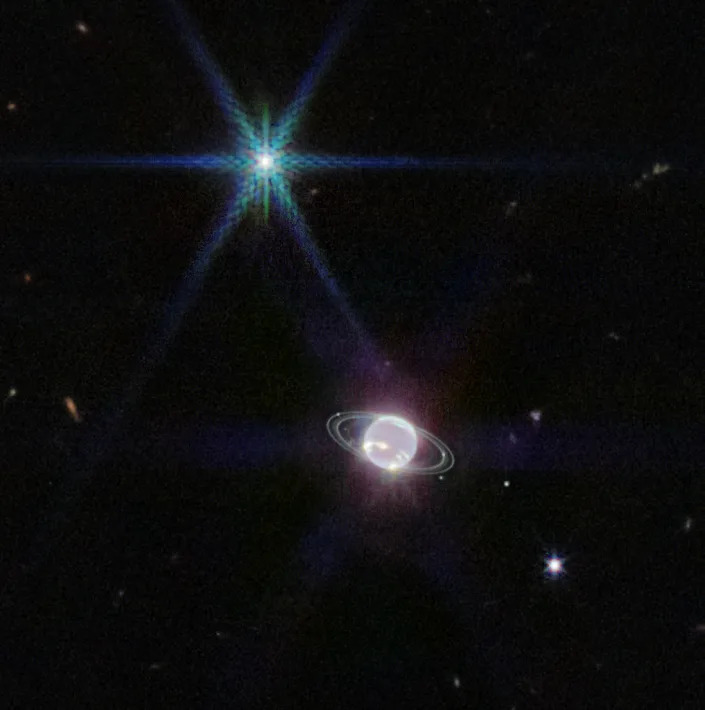

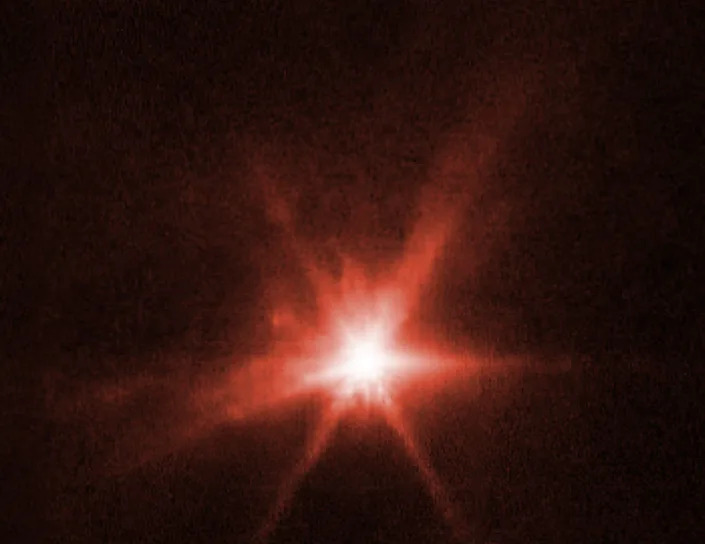
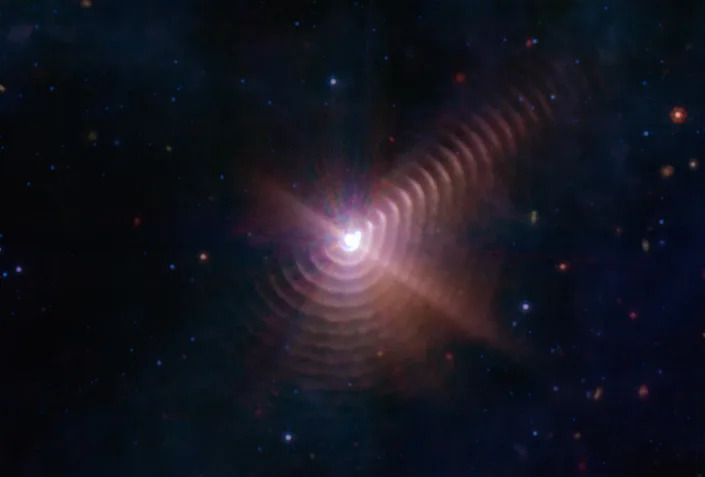
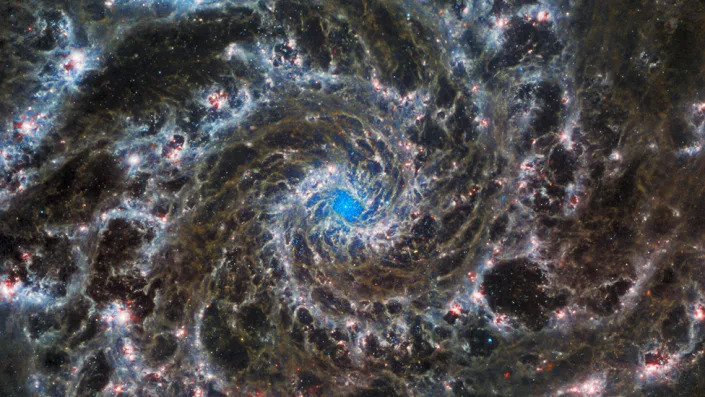
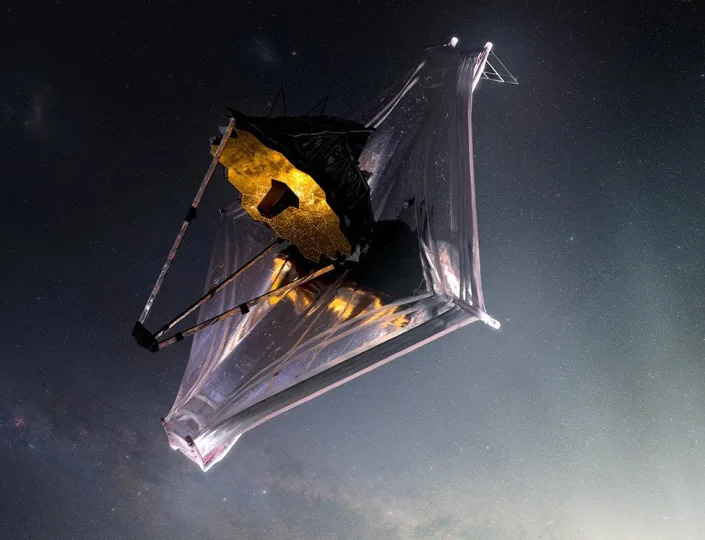
No comments:
Post a Comment